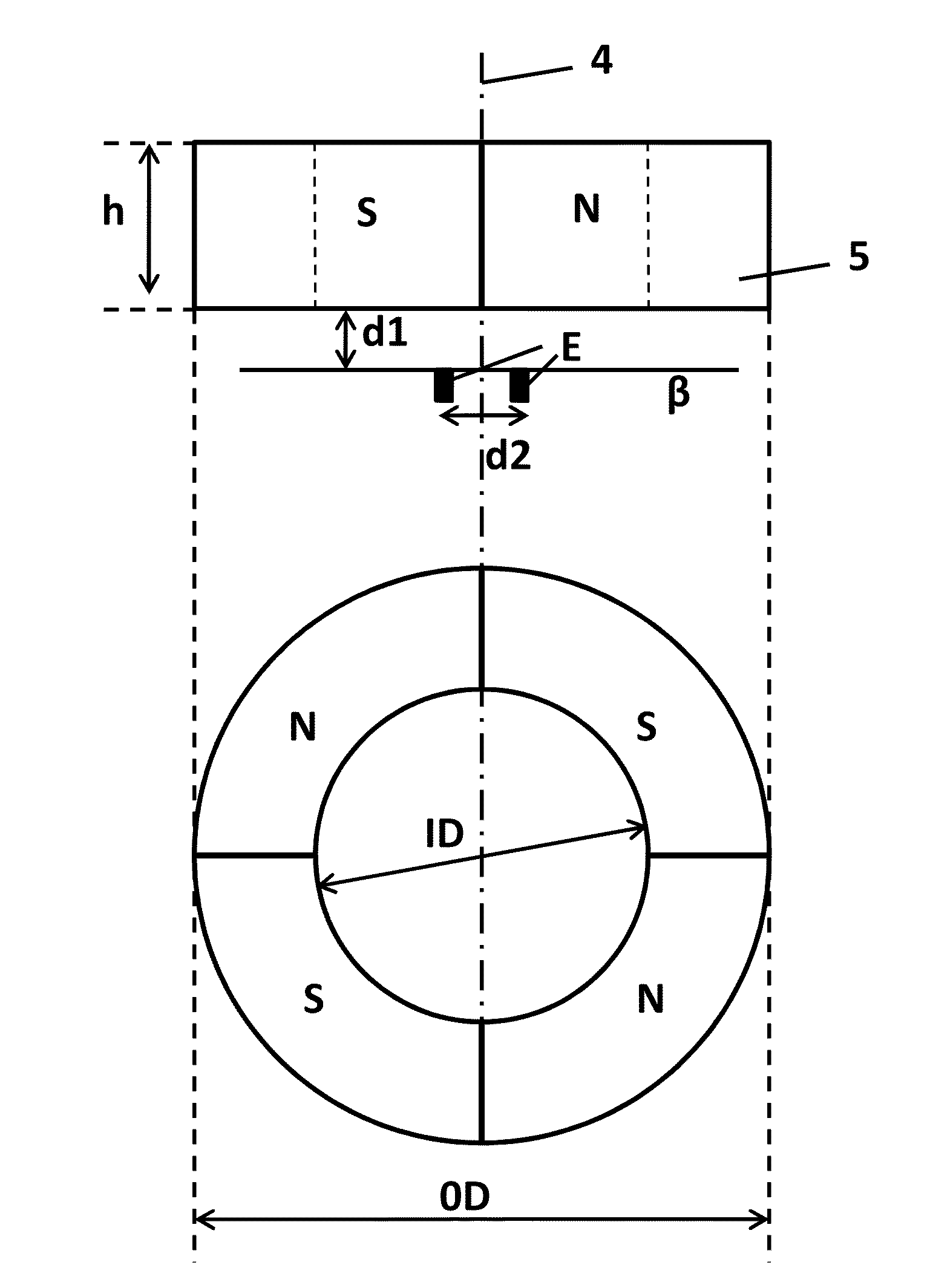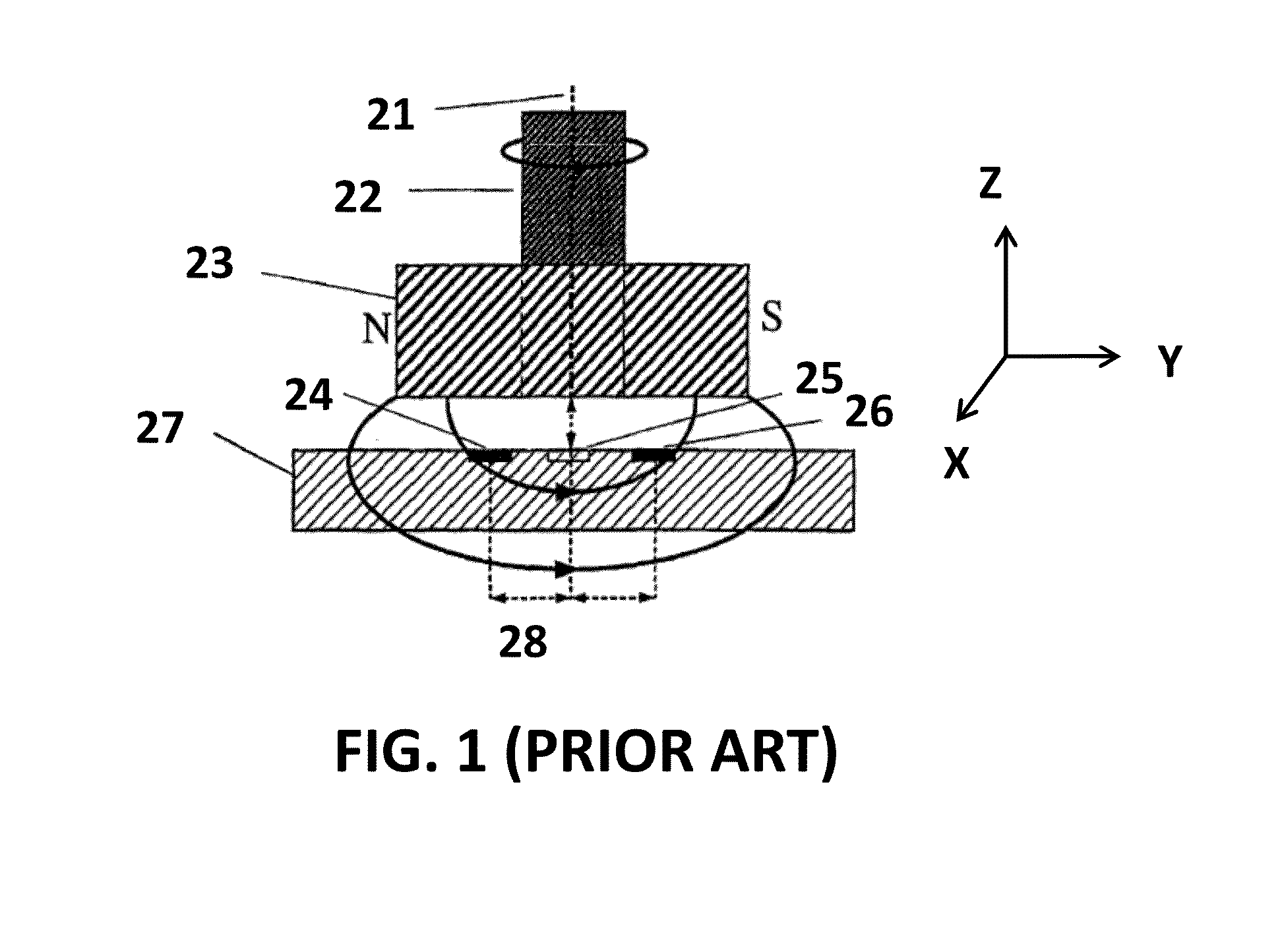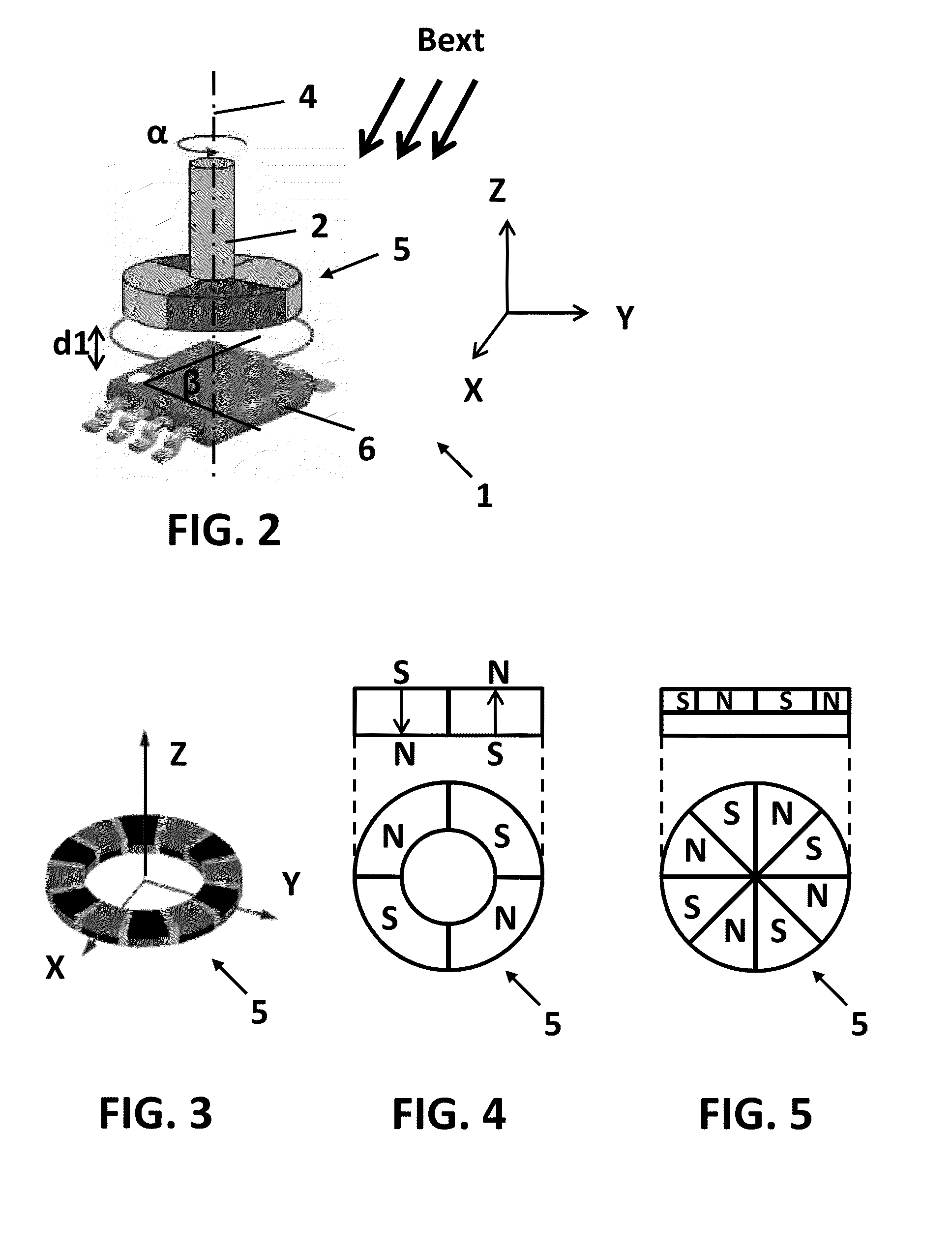Arrangement, Method and Sensor for Measuring an Absolute Angular Position Using a Multi-Pole Magnet
a multi-pole magnet and absolute angular position technology, applied in the field of position sensors using magnetic fields, can solve problems such as the application of small angle measurements
- Summary
- Abstract
- Description
- Claims
- Application Information
AI Technical Summary
Benefits of technology
Problems solved by technology
Method used
Image
Examples
first embodiment
[0130]FIG. 8 shows a sensor having four sensor elements VH1-VH4, in this case vertical Hall sensor elements, oriented for measuring a tangential field Bt to the imaginary circle 8. In this example, the sensor elements are arranged in two groups: a first group S consisting of the sensor elements VH2 and VH4, and a second group T consisting of the sensor elements VH1 and VH3. The sensor elements VH2, VH4 of the first group S provide the signals S1, S2 respectively. The sensor elements VH1, VH3 of the second group T provide the signals T1, T2 respectively. The signals S1 and S2 of the first group are added (not subtracted as in EP0916074B1) to form a first sum sum1, the signals T1 and T2 of the second group are added to form a second sum sum2:
sum1=S1+S2; (1)
sum2=T1+T2; (2)
[0131]The sensor elements within each group S, T are located equidistantly, e.g. at an angular distance of 720° / Np=e.g. 180° apart for a four-pole magnet, e.g. VH1 and VH3 are located 180° apart, as well as VH2 and ...
second embodiment
[0138]FIG. 10 shows a sensor having four sensor elements VHi, i=1 to 4, in this case vertical Hall sensor elements, oriented for measuring a radial field on the imaginary circle 8. The sensor elements are again arranged in two groups: a first group S consisting of the sensor elements VH2 and VH4, and a second group T consisting of the sensor elements VH1 and VH3. The sensor elements VH2, VH4 of the first group S provide the signals S1, S2 respectively. The sensor elements VH1, VH3 of the second group T provide the signals T1, T2 respectively. The signals S1 and S2 of the first group are added (not subtracted as in EP0916074B1) to form a first sum sum1, the signals T1 and T2 of the second group are added to form a second sum sum2.
sum1=S1+S2; (5)
sum2=T1+T2; (6)
[0139]By positioning the sensor elements VH1 and VH3 at 180° apart, and the sensor elements VH2 and VH4 180° apart (in general 720° / Np, where Np is the number of poles, in the example Np=4), and a sensor element VH2 of the fir...
third embodiment
[0143]FIG. 12 shows a sensor having four sensor elements HH1 to HH4, in this case horizontal Hall sensor elements, oriented for measuring an axial field on the imaginary circle 8. The sensor elements are again arranged in two groups: a first group S consisting of the sensor elements HH1 and HH3, and a second group T consisting of the sensor elements HH2 and HH4. It is to be noted that all sensor elements of a same group S or T which are in this embodiment located 720° / 4=180° apart, e.g. the elements HH1 and HH3 of the first group S or HH2 and HH4, are oriented such that that generate a value with the same sign for the same field direction (e.g. positive for field into the plane). The groups S, T are independent from one another, so both groups can have the same orientation or can have a different orientation.
[0144]The sensor elements HH1, HH3 of the first group S provide the signals S1, S2 respectively. The sensor elements HH2, HH4 of the second group T provide the signals T1, T2 re...
PUM
 Login to View More
Login to View More Abstract
Description
Claims
Application Information
 Login to View More
Login to View More - R&D
- Intellectual Property
- Life Sciences
- Materials
- Tech Scout
- Unparalleled Data Quality
- Higher Quality Content
- 60% Fewer Hallucinations
Browse by: Latest US Patents, China's latest patents, Technical Efficacy Thesaurus, Application Domain, Technology Topic, Popular Technical Reports.
© 2025 PatSnap. All rights reserved.Legal|Privacy policy|Modern Slavery Act Transparency Statement|Sitemap|About US| Contact US: help@patsnap.com



